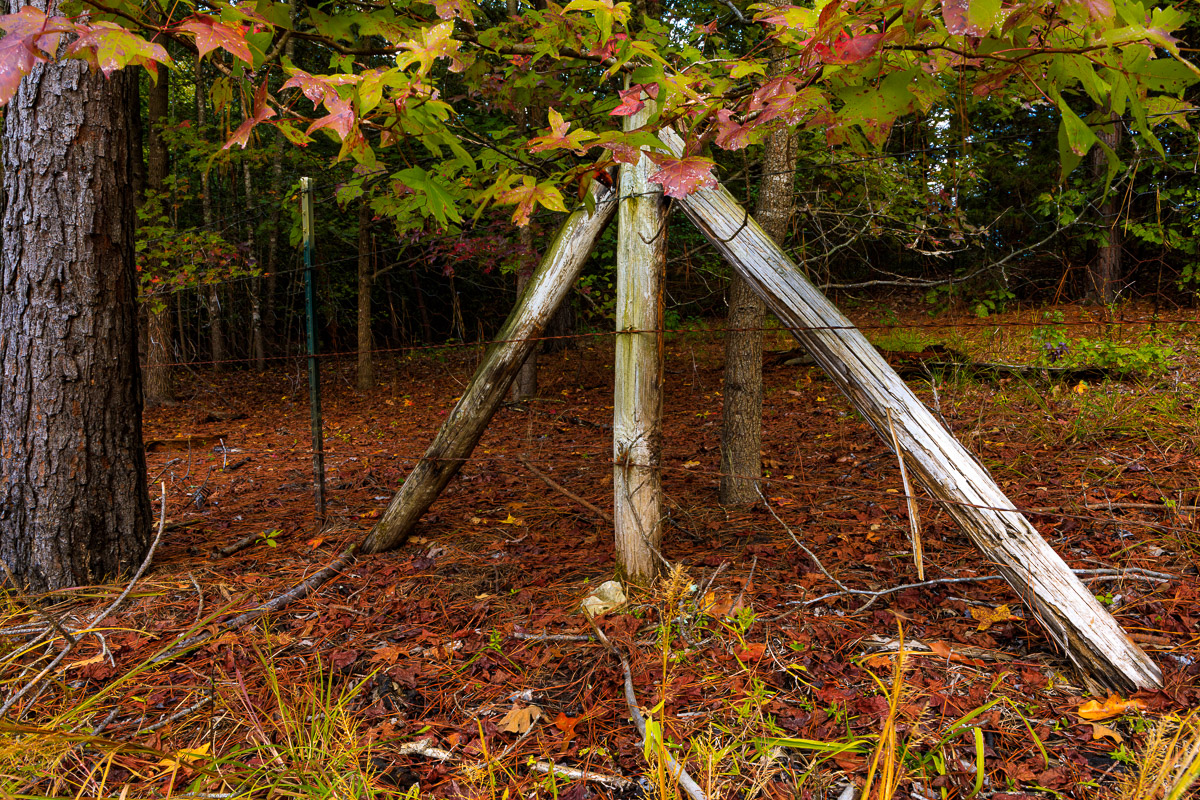The last few weeks have turned out to be rather hectic, and my opportunities to go out and do much photography have been pretty limited. But, I didn’t want that to completely hinder my photography, so I decided to stick closer to home.
As in my own yard. And, what better way to practice seeing familiar things in new ways.
So, one morning, I got up, grabbed my camera and tripod and started to walk around my yard. Trying to keep any preconceived notions at bay, I slowly made my way down to our small pond, and that’s where I found this composition.
It’s not that I hadn’t noticed this scene before; in fact, I’ve noticed it several times in the past. I don’t know if it was the lighting, the autumn leaves, or something else, but this was the first time it really stood out to me. I got my equipment set up and began photographing. But, it took me three attempts over two days to get what I was looking for.
In my first attempt, the depth of field did not have everything as sharp as I wanted. Unfortunately, I wasn’t that surprised. Ever since I made the switch to digital and began using zoom lenses about ten years ago, one of the biggest challenges I seem to face repeatedly is maintaining an appropriate depth of field. No problem, I thought. I’ll try again.
I went back later that afternoon for my second attempt. Keeping in mind the depth of field issue of my previous attempt, I tried a second tactic. Using a more moderate aperture, I would shoot one image with the tree in sharp focus and a second image with the fence posts in focus. Then, I would combine the two frames into a single final image in which everything would be sharp.
When I opened and combined the two files on my computer, the process worked ok, but the tree bark looked a little strange to me. I could have lived with it, but I had another more serious problem — I was less than pleased with the overall composition. It looked very flat and two-dimensional and didn’t seem to have any depth to it. But, the good thing about photographing in my own yard was that I could go back as often as I needed to. And, that was exactly what I did.
Knowing what I needed to do to ensure complete depth of field and that I needed to find a more pleasing composition, I went back the next morning for my third attempt. Before setting up my camera, I spent time walking around to identify the exact composition I wanted. After a few minutes, I found this composition. Only then did I set up my camera.
After identifying the composition and setting up the camera, I next focused on figuring out how to maximize the depth of field to ensure sharpness throughout the image. Remembering that my second attempt, where I used a moderate aperture and combined several images into one, didn’t work as well as I had hoped, I decided the best approach would be to close the aperture as small as it would go, f/22. Looking back, I probably could have gone with a wider aperture and achieved the same result, but, after three attempts at this, I didn’t want to take any chances.
For the third time in two days, I opened the image on my computer and hoped I had finally what I had been trying to capture. I was relieved to see it had turned out exactly as I had hoped it would. The next phase was probably the most important phase — processing the image.
When I think of Autumn, I think of two things: shorter days that usually seem to be just a bit less bright than they are during the summer and the reds and yellows of the autumn leaves. And, it was this personal vision of Autumn that I wanted to convey.
The first part, a less bright day, was easy to accomplish. I simply reduced the overall exposure of the picture by about one-half of a stop, which was enough to reduce the apparent brightness to a level in line with my mental picture.
The second part, emphasizing the autumn colors, took a little more finesse. I wanted the colors to stand out (after all, who doesn’t think of bright, bold, colorful leaves when they think of Autumn), but I didn’t want them to stand out so much that they became the main subject of the photograph. To accomplish this, I reduced the luminance of the three primary colors (orange, yellow, and green) while slightly increasing their saturation.
It might have taken me three attempts to capture the image I wanted, but I think the effort was well worth it.
